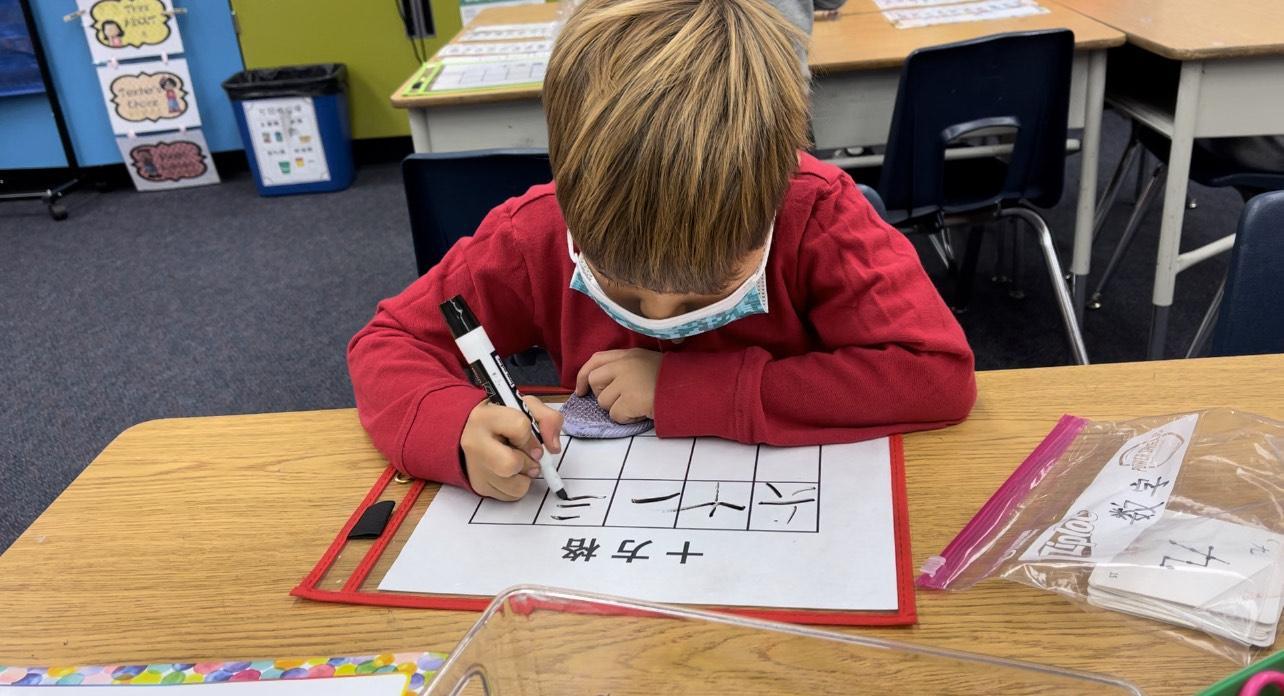Mandarin Immersion
Beginning with 50% Mandarin and 50% English Immersion
Creates a Linguistic Environment - Immersion means only one language is spoken by the teacher in the classroom for half the day, then the other teacher uses the other language for the other half.
Creates a Linguistic Environment - Immersion means only one language is spoken by the teacher in the classroom for half the day, then the other teacher uses the other language for the other half.
Chinese and English use different sides of the brain, setting up tremendous brain interface. A 2018 Massachusetts Institute of Technology study concluded, “It is nearly impossible to achieve proficiency… of a native speaker unless you start by 10,” Immersion has a very time critical element. The window to acquire language begins to close at around 4 to 6 years of age, and this window is only open once in a lifetime.
Our utmost priority is learning. Knowledge is not dependent on speaking a language. Students who are English Learners will receive English support. Research is clear that exposing children to a second language at an early age stimulates the development of critical thinking and problem-solving skills.
Students who are competent in more than one language consistently outscore monolinguals on tests of verbal and nonverbal intelligence, suggesting that immersion students have greater cognitive flexibility. Furthermore, studies have shown there are specific benefits for learning a second language:
- The ability to shift easily between symbol systems, such as mathematics and literacy.
- Higher performance on divergent thinking tasks indicating greater ability to solve problems in creative ways.
- Meta-linguistic awareness, which includes phonemic awareness, awareness of language as a tool to communicate, and the understanding that words are arbitrary symbols.
- Improved overall school performance and superior problem-solving skills
- Higher scores on standardized tests, including the Scholastic Aptitude Test (SAT), which shows that students who had studied a foreign language, for four or more years, outscored other students on the verbal and mathematics portions of the test.
- Students skilled in a second language, learn other languages more quickly
In the Dual Mandarin Immersion program, students are taught literacy and academic content in English and Mandarin. The Language use percentage for core instruction in the Dual Chinese Immersion Program from Kindergarten to 6th grade is 50% in English and 50% in Mandarin, and in 7th and 8th grade is 33% in Mandarin and 67% in English.The goals of dual language are for students
- Develop high levels of language proficiency and literacy in both languages.
- demonstrate high levels of academic achievement
- Meet the challenges of a global society
- Develop an appreciation for and an understanding of diverse cultures.
- Become bilingual and bi-literate
- Gain Carrer advantages
- Meet the challenges of a global society
Curriculum: Our Mandarin curriculum is integrated with Common Core State Standards and ACTFL language standards (American Council on The Teaching of Foreign Languages).
- Better Immersion (Chinese)
- Singapore Math (English)
- Wonders (English)
- Mandarin Matrix (Chinese)
- TWIG Science (English/Chinese)
- STEAM Project Based Learning (English)
- Students receive PE, Music and STEAM regularly
Tucker, G. R. (1999). A Global Perspective on Bilingualism and Bilingual Education:
Bruck, M., Lambert, W.E., Tucker, R. (1974), Bilingual Schooling through the Elementary Grades: the St. Lambert Project at Grade Seven. Language Learning 24. No. 2:183-204.
Met, Myriam, “Improving Students’ Capacity in Foreign Languages,” Phi Delta Kappan, November 2004.
MORE ON OUR MANDARIN PROGRAM (FROM LITERACY NIGHT)

